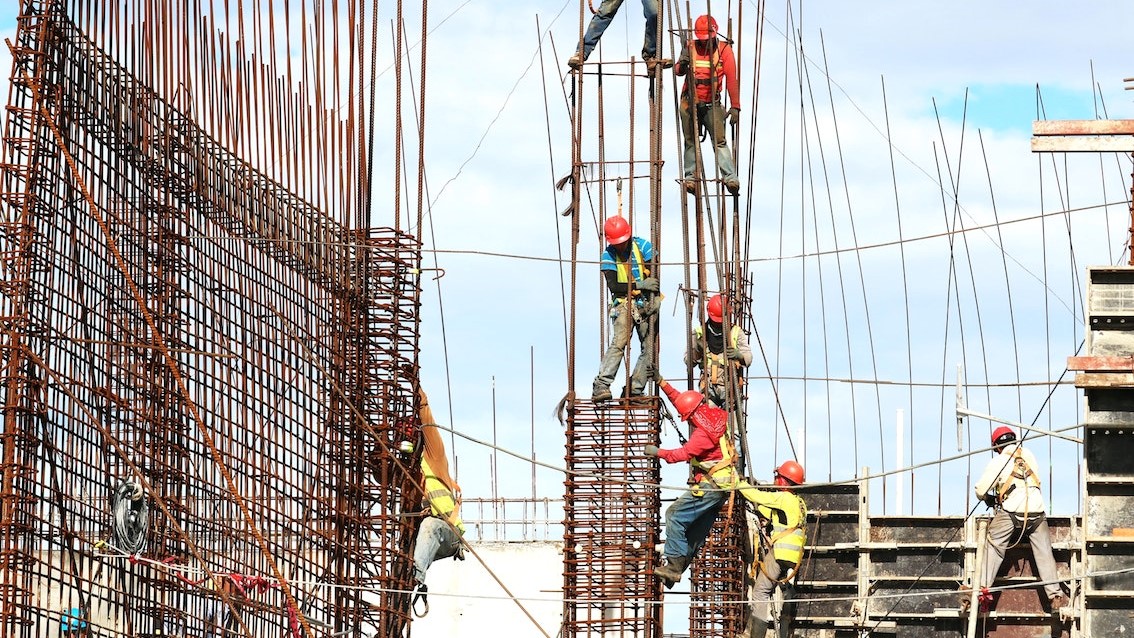
It’s widely assumed that BIM, or variations of it like digital engineering and virtual design and construction, are good in their own right for improving construction generally. But what if the benefits could be more clearly linked to specific outcomes, such as better health and safety, the benefits of which are already obvious to construction business leaders? Might that spark more interest in the technology and encourage faster BIM uptake?
Professor Kerry London FCIOB believes it can. Pro vice chancellor of research at Torrens University Australia, London has for years researched the adoption of new technologies in construction, including robotics and offsite manufacturing.
For the last three years, she has focussed on how BIM can make projects safer for workers, which is not usually the focus in BIM discussions. Her reasoning is straightforward: if a digital model of a project can be minutely interrogated to optimise construction planning, construction methodologies, logistics and clash detection, it’s a small step to interrogate that model for safety risks such as working at height and plant collisions.
In August 2019, the government of New South Wales (NSW), through its Centre for Work Health and Safety, commissioned London to lead a team of researchers from Torrens and Western Sydney University to investigate how BIM could be used to improve safety outcomes. The work involved scouring the world for examples of best practice and developing tools and guidelines for clients to use. That research was due to completed this month, and GCR caught up with her to find out more.
She said what stood out from the findings was that clients had to lead by prioritising BIM as a deliberate tool for improving health and safety outcomes, and that the best outcomes are achieved when contractors and specialist subcontractors are engaged early in the procurement, design and planning process.
‘Little gems of interesting practice’
In the first phase, researchers sought examples of safety management being integrated in BIM-enabled projects around the world. That involved a desktop review as well as conducting nine semi-structured interviews with experts in Australia, Singapore and the UK.

“We uncovered quite a good number of interesting examples,” London said. “Some were pilots, while others were little gems of interesting practice taking place although in isolation where people were using a model to query and interrogate construction methodology so they could go to the client leadership team and say, did you know that if we did this, it would make the work safer? The model was used to visualise the construction sequencing of different construction methodologies. This was especially useful to show the client what a safer approach looked like on site compared to the approach that was maybe less safe.”
Particularly helpful, London said, was the UK BIM Alliance, which was exploring the development of guidelines for integrating BIM and work health and safety management.
The next phase entailed a much deeper penetration into the Australian context and NSW in particular. Researchers interviewed 25 senior industry figures, and examined three major BIM-enabled projects.
That led to the development of a suite of guidance notes, decision-making tools and cases studies for clients, which are to be launched by the NSW government in the coming months.
“What we found was that client leadership is a really important part of BIM adoption and bringing BIM and safety management together,” said London. “Procurement and tendering are important because sometimes we put things out to tender and we ask for a BIM model but we may not quite know what we’re getting at the end of the day. So we thought, how can we give clients tools and understanding so they can lead more effectively in a collaborative way?”
“Integrating BIM and work health and safety management can happen when the client has created an environment for good data management. Some clients are already focussed on that, such as Transport for NSW. They’re very keen on digital engineering. So they create the environment and the construction supply chain has to respond. And of course they are also looking to improve how they do things ”
Leadership from the supply chain
London’s team found that some specialist subcontractors were keen to respond. A global crane company active in NSW – Marr Contracting – uses BIM extensively to model crane erection and dismantling, organise communication with the client and engineers, and interrogate and visualise construction methodologies to optimise movements for safety.
Another example is F&D Normoyle Engineering, which prefabricates timber screens for facades. It was working on a complex project to construct a nine-storey circular building, the Darling Exchange at Sydney’s Darling Harbour. This company modelled the logistics planning in BIM and each week they’d use the BIM model to communicate to other trades what elements were arriving on site, when and how they’d be installed. That meant the other trades could organise themselves for optimum safety.
“Examples like these informed the principles and tools we produced, and they make a great argument for early contractor involvement in achieving a good outcome,” London said.
Gaining traction
The researchers faced pockets of resistance to the idea that BIM could, and should, be approached from the angle of a specific business outcome like health and safety, but there are signs suggesting they had focussed on a useful target.
Separate to the research, the NSW government released its Infrastructure Data Management Framework (IDMF) in December last year. “I was scared to open that document,” London said, “because I worried it might say everything we’ve done is completely off track, but it was very gratifying to see that everything we’re doing is aligned with their framework.”
There has been some disagreement over the weight that ought to be given to the procurement phase in driving BIM adoption and the particular procurement strategy clients choose: whether design and construct versus traditional methods, for example. London feels sure procurement matters, but that the real differentiator is clients knowing what use they’ll make of the BIM model and how it’ll work with their company’s ethos for work health and safety.
“In Australia multiple parties, such as employers, contractors, designers and clients, can be liable for work health and safety and site accidents, so interest should be keen,” she said. “People tend to approach BIM generically, from a technology point of view and with a focus on improving productivity in general. But with health and safety being such an important topic here, as it is in the UK, it made sense to talk about how one can help the other, and see if that helps BIM adoption in a different way.”
London said the approach is gaining traction now. In October a committee will begin drafting parts of a new standard for ISO 19650 on the organisation and digitisation of information about buildings and civil engineering works. She has been invited to sit on that committee, which is focussed specifically on BIM and safety management.
“Not everybody gets excited about that kind of thing,” she said, “but I think it’s a really good outcome for the project. International standards have such reach and longevity that the research outcomes from this study will certainly have significant impact.”
Comments
Comments are closed.







Great article, timely, industry really need to step up and use BIM for work health and safety management
Great to see published that Health & Safety is a key integral part in the benefits of utilising digital engineering technology such as BIM.
Also that UK BIM Alliance are mentioned to embrace this with guidance.
The HSEs BIM4 H&S WG have been drafting a revised version of the previous client’s guidance focusing on PIRs linking with AIRs via Exchange Information Requirements (EIRs) (not Employers Information Requirements) with OIRs.
The intention is for the above guidance to be hosted on the UK BIM Alliance website with the suite of other industry guidance. But also hosted on CIOB and other professional bodies websites to share the knowledge and top tips for Clients, Principal Designers, Designers, Contractors and suppliers to embrace digital early in the project design addressing risks life cycle of the project and the asset.